Temple History

The Township of Kelwa is situated on the Western Railway, nearly75 Kilometers from Mumbai Central Railway Station, about 12 Kilometers from Palghar and Saphale Railway Stations and about 6 Kilometers away from Kelwa Road Railway Station the word ‘Kelwa’ is a corruption of the Sanskrit word ‘Kardalivaha’ this means that the township of Kelwa has an important place to the Mythology and History. This land has been rendered holy lay the foot-prints of lord Ram. Kelwa town coasts of a very ancient temple of the Goddess Shitala-Mata. This temple, built in very distant past, underwent a complete renewal and restoration at the hands of a seventhly female ruler Devi Ahilyabai Holkar about three hundred years ago-thereafter, the temple structure had become worn-out and frayed.
Some wise and discerning soul in the Kelwa town, constituted a Repairs and restoration committee and varied out repairs, renewal and restoration of the old structure in 1986. The Restoration committee with the Ex-Revenue Minister Padmashri Bhausahib Vartak as its President, was duly appointed. The Work of restoration began according to the design and lay-out given lay the famous architect of Mumbai, Shri. Prabhakar B. Save. The additional land-worship was performed at the auspicious hands of Padma Shri Bhausahib Vartak and the corner-stone was laid at the auspicious hands of the famous industrialist of Mumbai, of edifice-workshop and the ascending the holy water-pot was duly performed on the first day of Chaitya on April 10th, 1986. Padmashri Bhausahib Vartak Presided over the function and Hon. V.S.Page, ex.-chairman of the Legislative Council, was the guest of honour the Vaidya Pundit Shri. Garge Shastri and his priest colleagues carried out the religious rituals.
Alongwith the renewal and restoration of Shri Shitala Devi Temple, Hanuman Temple, Valekeshwar Temple and Ramkund, the work of the beautification of the surroundings and neighbourhood of these temples has also been wealthy carried out. Opposite the Shitala Devi Temple, there is an irrigated land called Bagalwadi and the Goddess Shitala is reported to have inherited this land security. As times went by the Goddess made a divine appearance before a farmer in his dream. The news spread far and wide among the people of the Gopal- and they forthwith searched out the Goddess. Though they did not know the exact place of her residence, they reached the proper spot and dug out her idol they brought the idol of the Goddess to the township in procession with drums and fun-fare and installed the image quite ceremoniously at the place where it remains to-day.
About Temple
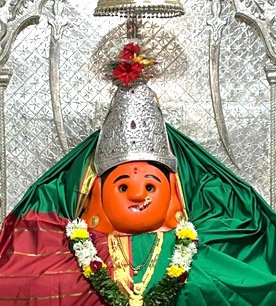
Shri Mata Shitla Devi
This idol of the Goddess, carved out in an unbroken stone, is self-existent and is very pleasing to the eye. For from being fierce and ferocious, this deny is calm, cool and peaceful and that is why the name “Sheetalai” has been given to her. This is a living deity and always. Looks with favour on her devotees. Thousands of devotees have experienced that she safely frees men from various ailments, illnesses and difficulties. She is the place of hope and faith of the countless devotees from Maharashrtra, Gujrat and Rajasthan.
At the time of worship, the devotees after and lay at the feet of Shitala-Mata seeked cloth, coconut, rice and other traditional offerings thousands of such devotees whose vows have been requited and fulfilled, come to the Temple of Shitala Devi over and over again and they offer money and jewellary as a token of their devotion.

Shri Siddivinyak
To the month of the Goddess Shitala Mata, we can see the idol of Siddhi-Vinayak, carved in unbroken stone with Riddhi and Siddhi in his lap. This image, carved in arced, decorated, marble-frame has been installed and it shows the Siddhi-Vinayak deity with his trunk leaning on the right.


Shri Valukeshvar
There is a temple on the north side of Shitala Devi of self-existent Lord Shiva. It was through ouster penance of Lord Rama that this emblem or symbol of Lord Shiva manifested itself alongwith the Ganga through sand. Such a self-existent emblem emanating from sand is the only of its kind in India and so it is called “Bhavani Shankar Valukeshwar’ Lord Rama worshipped this emblem quite in according to the rules and after drinking the holy water of the Ganga which oozed out the emblem, he alongwith Lokshwana, proceeded to Lonka with the help of Hanuman the son of wind from the zenith of the emblem of lord Valukeshwara, the Ganga keep on flooring constantly. The deepest part on the zenith of the emblem is nearly 2” x 2” x 2”. The Ganga spotlessly clean and cool keeps on flouring from this deepish part. Even if this part is wiped dry with a piece of cloth, it immediately begins to overflow with the holy water of the Ganga. This is regarded as a veritable miracle.
In times of famine and drought, the people of Kelwa Township after devout worship to God Valukeshwara and keep the emblem of God drowned or submerged in the water of the Ramkund which is just opposite the Shitala-Mata Temple. It has been the experience of the people of Kelwa that within a couple of days from the worship there is a torrential downpour which dispels the famine and drought.
On the Mahashivartri day, the tender says of the missing Sun gracefully alight on the Shiva emblem straight from the door to the east. The devotees pay a visit to the God valukeshwar through the horns of the Bull-God opposite the Sanctum of the God Valukeshwara.
The renewal and renovation of this very anicient lake, dating track to the times of the Ramayana was carried out in three stages during the period 1996 to 2000. The total cost of the project worked out to about Rs. 12 Lakhs out of which Rs. 5 Lakhs where generously donated. Dr. Mira Rao, a staunch devotee of the Goddess Shitala-Mata, the doner being on NGO now residing at Atlanto in the U.S.A. the Design and lay-out of renewal and beautification has been prepared by Shree Prabhakar Save, a well-known architect from Mumbai.
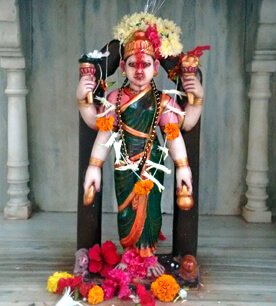
Shri Mata Partvati
On the north side of the God Valukeshwar, there is the image of the Goddess Parvati carved in marble. and installed in a marble frame which is decorated. This idol is standing and has four hands.

Shri Hanuman
There is a small Hanuman Mandir (Temple) just near the Shitala Devi Temple on the South. The idol faces the east. It is carved in unbroken marble and is marce-bearing. Alongside the main image a small marble image has been installed for the facility of the devotees who would sprinkle holy water, after oil and read-lead to God Hanuman.
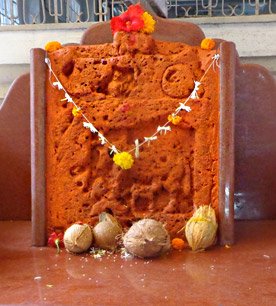
Shri Govla
Just outside the entrance of the Shitala Devi Temple, there is the idol of Govala towards South. The word Govala means a milkman. He is the only brother of Shitala Devi and her six sisters. Devotees trust pay a visit here, offer coconut to Govale after which, they enter the Temple.
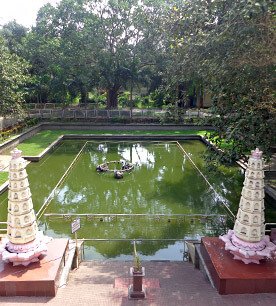
Ram Kunda
The lake or pond opposite the Shitala-Mata Temple is very ancient, it dates track to the times of Lord Rama. At the tomes of Rama-Ravana war, Rama had stayed at Kardalivaha i.e. modern kelve, after annihilating the demons Ahi and Mahi, before he proceeded to Lanka. Being an earnest devotee of Lord Shiva Rama desired to sprinkle holy mater on the emblem of Lord Shiva and so he threvy an arrow in the ground and there was a beautiful lake of water which today goes by the name of Ramkund.
Even today, the devotees utilixe the water from Ramkund for their worship, sprinkling holy water on the Shiva emblem and to free themselves from illnesses and their difficulties and trouble. They also drink this holy water so as to get over all ailments and disasters which freefall them.
Temple Gallery
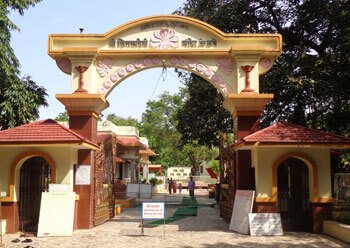
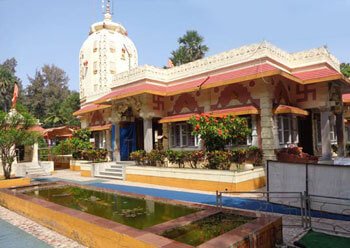

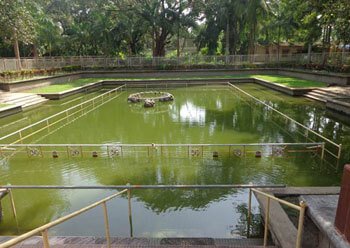
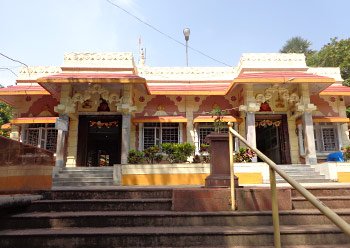
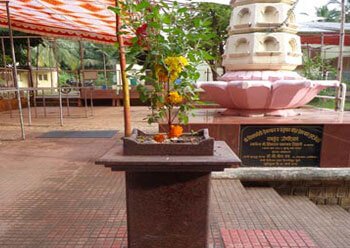


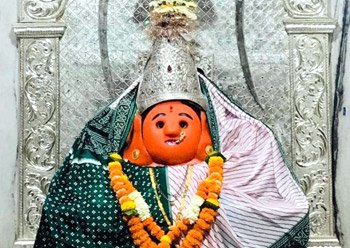





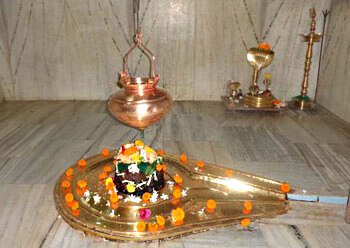
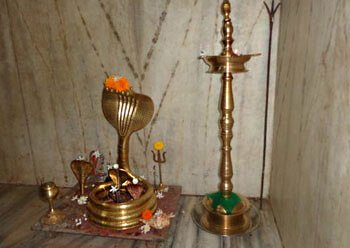



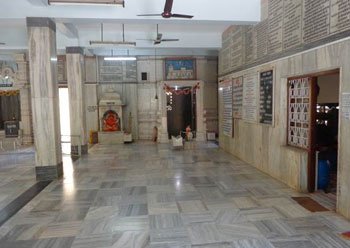
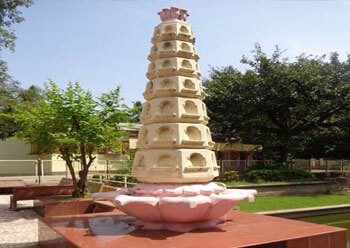
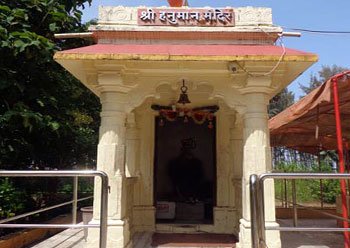

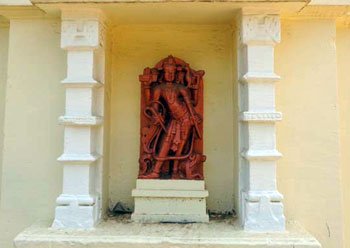
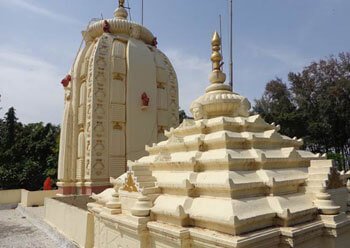

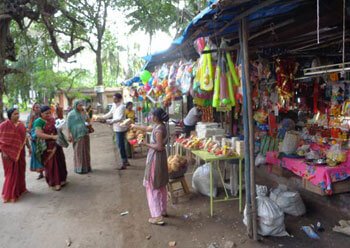

Dailly Aarti



